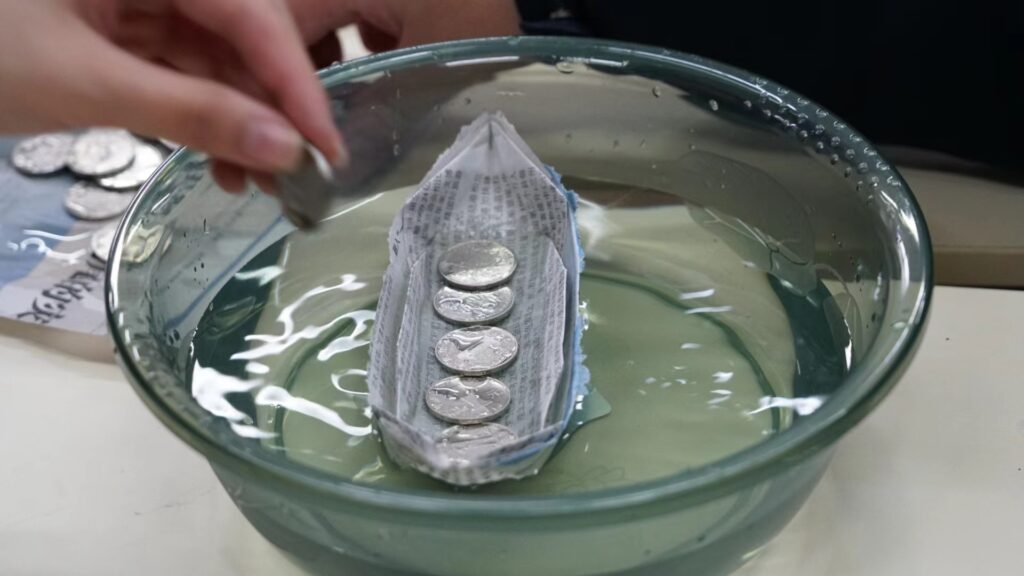By George and Martina
At the beginning of December, the Arctic Fox group planned a very interesting scientific game, including a fruit battery experiment, fun math questions, and a physics experiment. Unlike the previous games, this time they combined knowledge of science and math with small games, allowing students to learn while playing and play in school. For the orderly progress of the game, the students were divided into three groups: A, B and C.
First, the students in Group A entered the physics experiment classroom. What they saw were several birdbaths with water and a stack of newspapers. Then, the classroom administrator began to introduce the rules, and the students suddenly realized that the experiment required us to float the paper boat on the water to carry the coins, and the team who can float the most coins wins. Mr. Wynnychuk made a big rectangle to win. The students were very shocked, gathering around this boat watching the coins stack up without sinking. The other students also made different shapes of boats, which were not able to hold all the coins but still achieved excellent results.

Secondly, the students in Group B participated in a small fruit battery experiment. The students needed to connect a wire and a fruit to light a small light bulb. The one who joined the wire and lit the light bulb the fastest won. The table was covered with apples, tomatoes and oranges. As the clock started, a tense atmosphere filled the classroom. The students used the fastest speed to connect the wires, racing against time, and then inserted the three fruits to light the small light bulbs. Wapiti won the final victory. It took only 30 seconds to complete all the connecting tasks in a smooth and clean set of actions.
Finally, the students in group C went to participate in the mathematical puzzles first. Many students said that this was the most interesting experiment. This game included a lot of small games and prepared a challenge game for us while waiting. The final game involved doing math problems in five minutes to build a building, and the team with the most blocks wins. Some groups organized their teams very well, with one person doing the problems and one person building blocks, which improves efficiency, but the disadvantage is that they will produce fewer problems than other groups. Big Horn Sheep made a wonderful performance. Two members of their team worked together to greatly improve their efficiency and finished the building blocks in the last few seconds to win the championship.
This activity was very special and successful. In the process of division of labor and cooperation among team members, the tacit understanding and sense of team honor were gradually established. In fun activities, the students not only have fun, but also learn a lot of physics and mathematics knowledge. I believe the students also realized that we can integrate knowledge into our daily lives build interest and enhance understanding.

